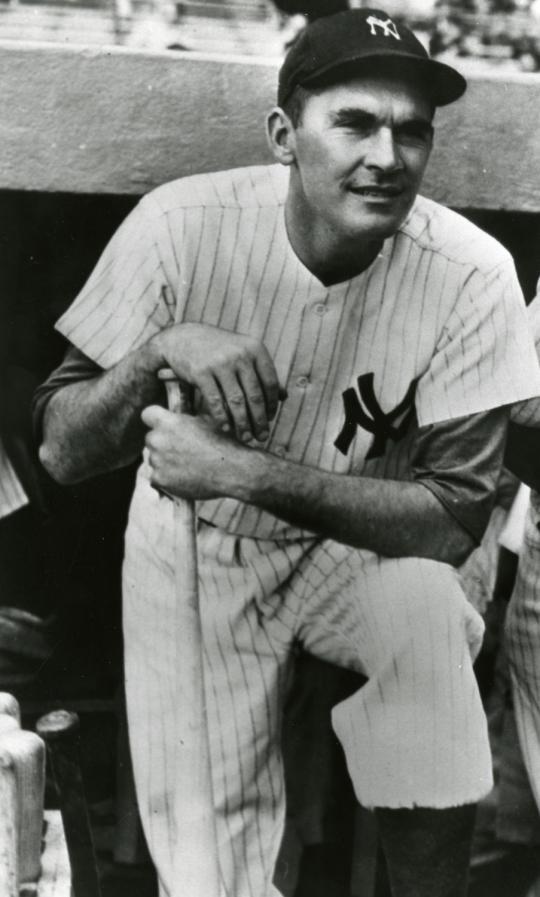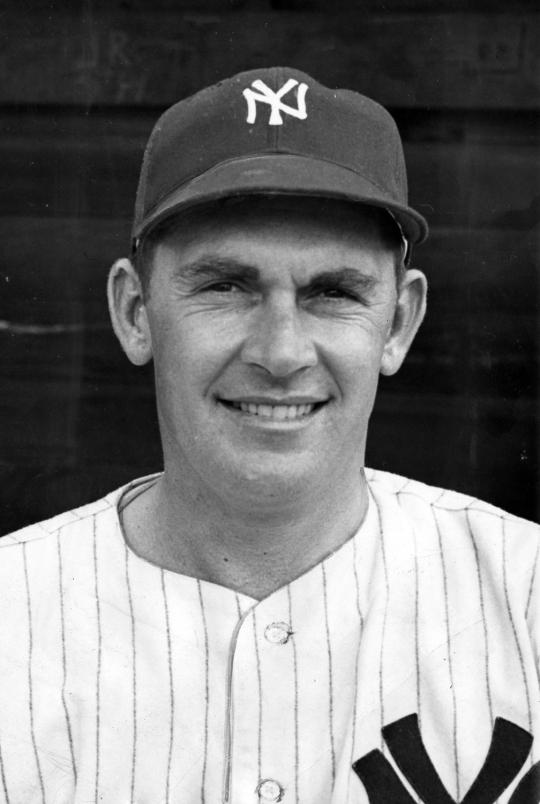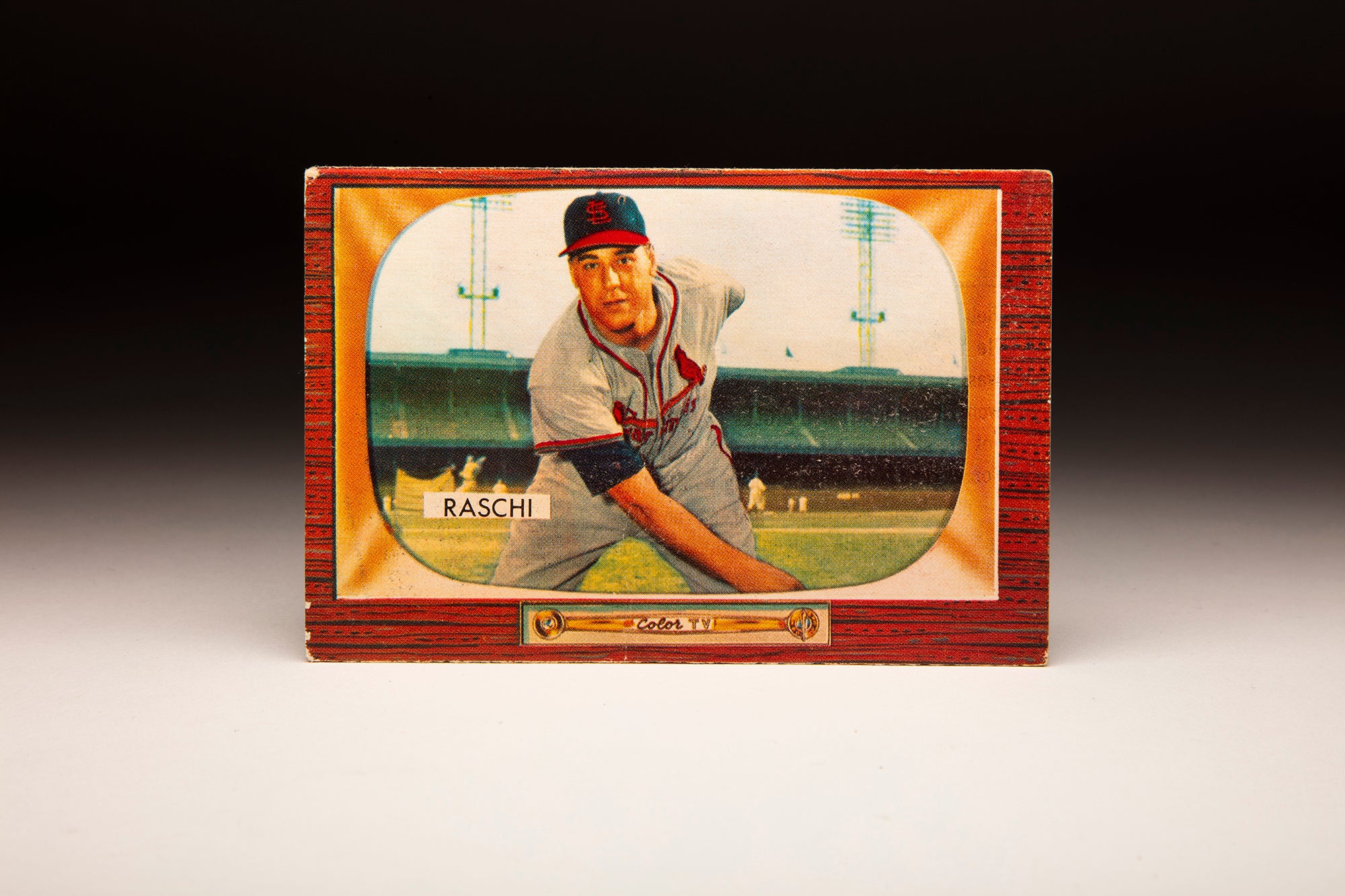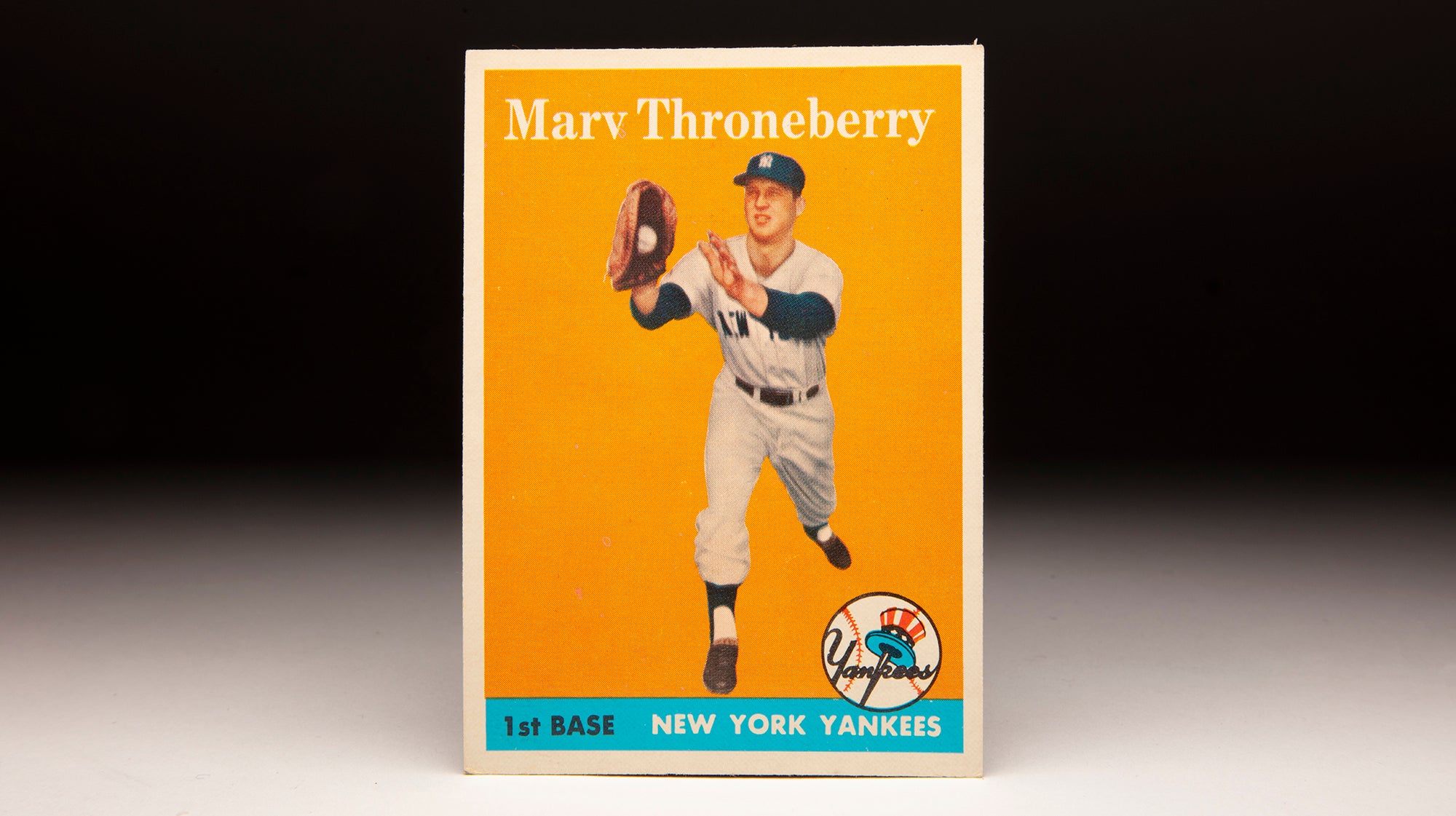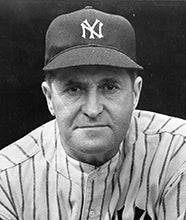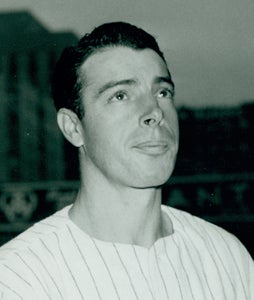- Home
- Our Stories
- #CardCorner: 1950 Bowman Johnny Lindell
#CardCorner: 1950 Bowman Johnny Lindell
The Angels’ Shohei Ohtani electrified the baseball world in 2018 with his excellence on the mound and at the plate, winning American League Rookie of the Year honors as a two-way star.
Ohtani’s success has encouraged teams to experiment with additional two-way players like Michael Lorenzen, JB Shuck and Anthony Gose. In an era where versatility is at a premium, it’s a trend that will likely continue.
But it is nothing that is new. More than 70 years ago, Johnny Lindell proved that talent is talent – no matter what the position.
Hall of Fame Membership
There is no simpler, and more essential, way to demonstrate your support than to sign on as a Museum Member.
Lindell was born Aug. 30, 1916, in Greeley, Colo., and spent his teen years in Southern California. An exceptional youth athlete, he signed with the Yankees prior to the 1936 season and excelled as a pitcher in the minors – while at the same time wielding a potent bat.
Focusing on his work on the mound, Lindell went 18-7 with a 2.70 ERA for Double-A Kansas City in 1940, which earned him a spot on the Yankees’ Opening Day roster in 1941. But after one pinch-hitting appearance on April 18, the Yankees sent Lindell to Newark Bears of the International League – where he went 23-4 on the mound with a 2.05 ERA while batting .298. Following the season, the Sporting News named Lindell it’s Minor League Player of the Year.
Lindell again made the Yankees’ Opening Day roster in 1942, but he was unable to find regular work in New York’s starting rotation. He picked up his first win on June 30 against the Athletics, pitching 2.2 scoreless innings and singling home George Selkirk in the eighth inning with the eventual winning run in New York’s 4-3 victory.
In 52.2 innings over 23 games that year, Lindell was 2-1 with a 3.76 ERA. He hit .250 (6-for-24) with four RBI at the plate and did not appear in the World Series that fall against the Cardinals.
Yankees manager Joe McCarthy apparently gave up on Lindell as a pitcher following his rookie season, but McCarthy saw something in Lindell as a hitter. With several Yankees stars like Joe DiMaggio and Tommy Henrich headed for the military following the 1942 season, Lindell – who had a deferred draft status – got the chance to play the outfield in 1943.
Lindell got off to a fast start – hitting .327 as late as May 29 – and was named to the AL All-Star team. In 122 games, he finished the season with a .245 batting average, 51 RBI and a league-best 12 triples. He also appeared in four games in the World Series as the Yankees avenged their 1942 loss to the Cardinals, defeating St. Louis in five games.
In 1944, Lindell had his best season – hitting .300 with 18 homers and 103 RBI as the Yankees everyday center fielder. He led the AL with 297 total bases and 16 triples, finishing third with a .500 slugging percentage.
But in 1945, Lindell’s draft status was reclassified, and he played in only 41 games before being inducted into the Army in June. The end of World War II hastened the end of Lindell’s military service, but it also meant the stars returned to the Yankees lineup in 1946.
He served mainly as a fourth outfielder that season, hitting .259 with 10 homers and 40 RBI in 102 games.
For the third straight season – the longest such stretch since 1933-35 – the Yankees did not win the AL pennant.
In 1947, however, an injury to Charlie Keller gave Lindell a chance at regular playing time – and he responded with 131 hits in 127 games, good for a .275 batting average.
New York climbed back atop the AL standings, and in the World Series, Lindell hit .500 (9-for-18) with seven RBI and five walks to help power the Yankees past the Dodgers.
The next two seasons, Lindell returned to his role as a reserve outfielder.
But in the final two games of the 1949 season against the Red Sox – with Boston entering the series leading the AL by one game – Lindell played a crucial role.
In the first game, his two-out, eighth-inning home run broke a 4-4 tie and provided the margin of New York’s 5-4 win.
Then in the winner-take-all last game of the season, Lindell began a rally with a single to center field in the eighth inning, helping turn a 2-0 Yankees lead into a 5-0 advantage.
The insurance runs would prove critical as Boston scored three in the ninth before Vic Raschi extinguished the rally to give New York the pennant.
Lindell appeared in two Fall Classic games that year against the Dodgers, collecting his third World Series ring.
But entering the 1950 season, the 33-year-old Lindell was fighting off playing time challenges from Yankees youngsters like Gene Woodling and Hank Bauer. Appearing in seven of the Yankees first 12 games of the season, Lindell had just four hits – all singles – in 21 at-bats. On May 15, his contract was sold to the St. Louis Cardinals.
In 36 games with the Cards, Lindell hit .188 with five homers and 16 RBI. He was dealt to the Dodgers on July 30 but never appeared in a game for Brooklyn, instead appearing in 35 games for Brooklyn’s Triple-A team in Hollywood – and even making one appearance as a pitcher.
In 1951, Lindell hit .292 in 75 games with Hollywood as a batter. But he also went 12-9 with a 3.03 ERA over 190 innings as a pitcher, utilizing a knuckleball he taught himself while still with the Yankees.
In 1952, Lindell went 24-9 for the Stars, leading Hollywood to the Pacific Coast League title and capturing the league’s MVP award.
Fred Haney, who managed the Stars in 1952, became the Pittsburgh Pirates’ manager in 1953 and installed Lindell into his starting rotation. The 36-year-old Lindell went 5-16 with a 4.71 ERA for a team that would eventually lose 104 games.
On Aug. 31, Lindell’s contract was purchased by a Philadelphia Phillies team trying to make up ground in the NL pennant chase. Lindell went 1-1 with a 4.24 ERA over five games, completing two of his three starting assignments. The Phillies finished third in the NL with a record of 83-71.
For the season, Lindell was 6-17, leading the NL in both walks (139) and wild pitches (11) – statistics worthy of a pitcher who estimated he threw the knuckleball most of the time.
Lindell did not appear in the majors as a pitcher in 1954, though did get into seven games as a pinch hitter before drawing his release on May 10. With that, Lindell’s playing career came to an end.
He spent his later years working as a speaker for several organizations, including the Los Angeles Angels, before passing away on Aug. 27, 1985, at the age of 68.
A star for stretches on both the mound and at the plate, Johnny Lindell made a career out of every ounce of talent he had.
Craig Muder is the director of communications for the National Baseball Hall of Fame and Museum

